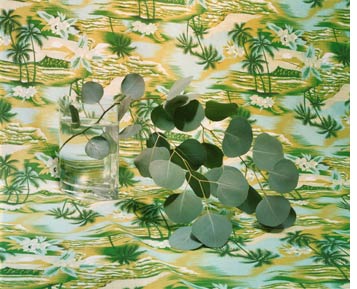Annette Kelm was born in Stuttgart, Germany in 1975. She
studied in Hamburg and currently lives and works in Berlin making photo-based
work. Her images are carefully lit and composed, than captured with analogue cameras.
They fall into the standard categories of still life, portraiture, and landscape.
However, the images themselves are not conventional. Frieze magazine points out
that “As self-evident as
her images appear, they are undercut with a strangeness that questions not only
the purpose of the objects, but also the nature of their representation.” She
comments on the history of photography and its place within the art canon as
well as its ability to filter imagery.
This image, After Lunch Trying to Build Railway Ties (2005), is a good example of her peculiar still life set ups.
This untitled series of images (2007) is the most interesting work to me. The woman, dressed in all black, is photographed in front of a solid blue background. Her face is obscured by a hat. It is impossible to get much information about the woman, because of the neutrality of the photographs. Each image is framed in the exact same way, and the only changes between images show the movement of the head. According to the article "Twisting and Turning" by Beatrix Ruf, published in Parkett, "As in other series, we look at the pictures so long and so intently until the act of looking itself becomes the context." The repetition of an image is a method that Kelm often uses in her work. This causes the viewer to have to search out the differences between the images. She addresses photography's portrayal of time- she shows it passing but also being arrested by the still frame.
I think this is her strongest work because of the way that it forces the viewer to closely observe the images.



No comments:
Post a Comment